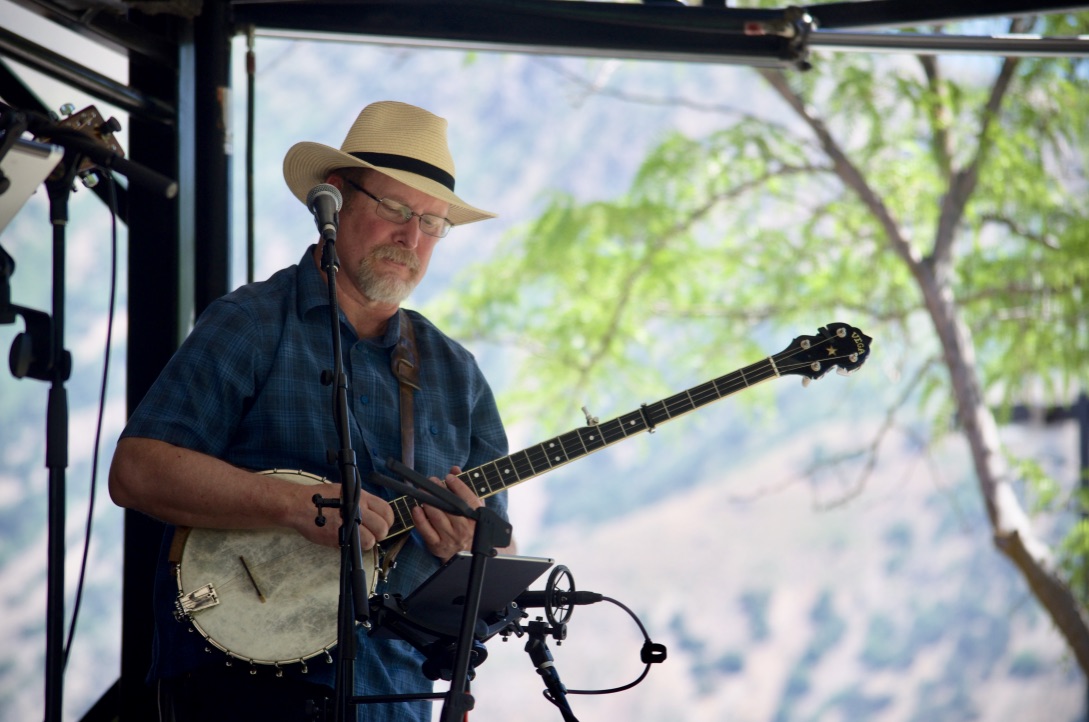I made a conscious decision to do this as my notation software (
Overture by Sonic Scores) offers the flexibility to notate it either way. Twenty years ago, the "above the line" method was as popular as the "on the line" approach. Personally, I find the "above the line" approach easier to read.
When you write tab with the notes superimposed on the line, it sometimes becomes difficult to tell the difference between certain fret numbers (such as 3, 8, and 5). It's also hard to write the symbol for slides (glissandos) which is a dash instead of an arc; the dash blends in with the staff line and so becomes invisible.
As far back as I can remember, banjo tabs have been written using both methods. I believe Pete Seeger's How To Play The Five String Banjo was the first modern banjo method published and it used the "above the line" approach. The first book I recall as being specifically written for clawhammer banjo was John Burke's Old Time Fiddle Tunes For Banjo, and the notes were written "on the line". From that point on the banjo camp was pretty well split as to the preferred method until the advent of tab writing software, most of which doesn't give the user the option of writing tab above the line; a gross disservice to those of us who arrange tablature.
I looked through my collection of banjo books and found the following titles where the tab notation is written above the line:
General Banjo Methods:
- How To Play The Five String Banjo by Pete Seeger
- The Banjo Newsletter (all issues before the invention of tab specific software)
Clawhammer Titles:
- Melodic Clawhammer Banjo by Ken Perlman
- Teach Yourself To Play Clawhammer Banjo by Michael Miles
- New England & Irish Fiddle Tunes For Clawhammer Banjo by Ken Perlman
- Mel Bay's Complete Clawhammer Banjo Book by Lisa Schmitz and Alec Slater
Three Finger Titles:
- Earl Scruggs And The Five String Banjo by Earl Scruggs
- Banjo Song Book by Tony Trischka
- 3 Finger Pickin' Banjo Song Book by Mike Bailey
- Teach Yourself Bluegrass Banjo by Tony Trischka
- Back Porch Melodic Banjo by Maynard and Sara Johnson
- Bluegrass Banjo by Peter Wernick
- Melodic Banjo by Tony Trischka
- Masters Of The Five String Banjo by Tony Trischka and Peter Wernick
- Poor Richard's Almanac, Banjo Sandwich, & The Banjo Kid Pick's Again (tab books from various albums) by Alan Munde
Judging from "pro vs con" emails I've received on this subject, those who have taken the time to become acclimatized to my system not only have no trouble reading it, they tend to prefer it.




